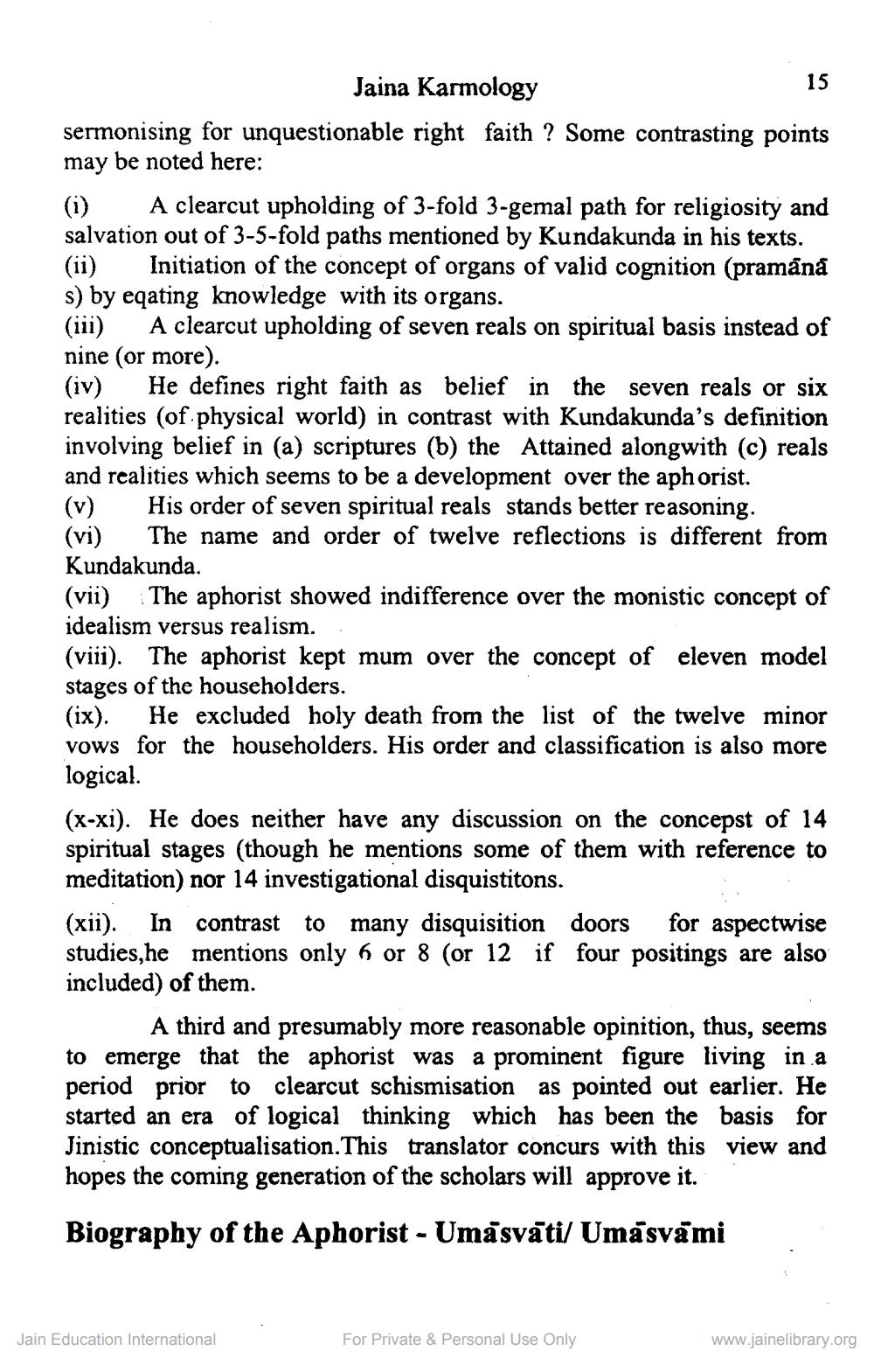________________
Jaina Karmology
sermonising for unquestionable right faith? Some contrasting points may be noted here:
(i)
A clearcut upholding of 3-fold 3-gemal path for religiosity and salvation out of 3-5-fold paths mentioned by Kundakunda in his texts. (ii) Initiation of the concept of organs of valid cognition (pramână s) by eqating knowledge with its organs.
(iii) A clearcut upholding of seven reals on spiritual basis instead of nine (or more).
(iv) He defines right faith as belief in the seven reals or six realities (of physical world) in contrast with Kundakunda's definition involving belief in (a) scriptures (b) the Attained alongwith (c) reals and realities which seems to be a development over the aphorist. His order of seven spiritual reals stands better reasoning.
(v) (vi)
The name and order of twelve reflections is different from Kundakunda.
(vii) The aphorist showed indifference over the monistic concept of
idealism versus realism.
(viii). The aphorist kept mum over the concept of eleven model stages of the householders.
(ix).
He excluded holy death from the list of the twelve minor vows for the householders. His order and classification is also more logical.
15
(x-xi). He does neither have any discussion on the concepst of 14 spiritual stages (though he mentions some of them with reference to meditation) nor 14 investigational disquistitons.
(xii). In contrast to many disquisition doors for aspectwise studies,he mentions only 6 or 8 (or 12 if four positings are also included) of them.
A third and presumably more reasonable opinition, thus, seems to emerge that the aphorist was a prominent figure living in a period prior to clearcut schismisation as pointed out earlier. He started an era of logical thinking which has been the basis for Jinistic conceptualisation. This translator concurs with this view and hopes the coming generation of the scholars will approve it.
Biography of the Aphorist - Umāsvāti/ Umāsvāmi
Jain Education International
For Private & Personal Use Only
www.jainelibrary.org




